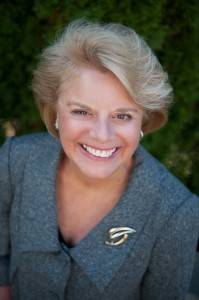Generations, like people, have personalities. Although there is danger in generalizing, it is important to understand the needs, motivations and value systems of each of the generations so you can work with well with people outside of your age-group.
Veterans (1922–1944)
The Veterans born before WWII have values that were shaped by The Great Depression, the New Deal, World War II, and the Korean War. These values emphasize civic pride, loyalty, respect for authority, dedication, sacrifice, conformity, honor and discipline. This is a generation that is driven by duty before pleasure. In the workforce they are stable, loyal, hardworking and employed with their company for 30 years or more. To them, work is a privilege.
Baby Boomers (1945–1963)
Raised in an era of extreme optimism, opportunity and progress, their values were shaped by landing on the moon, the Peace Corps, the Vietnam War, Woodstock and the Civil Rights movement. As a group, they’ve always been determined to do better than their parents and provide their children with everything their hearts desire. Most can be counted on to go the extra mile on the job. The result is many of them become workaholics, inventing the 60-hour workweek. They often achieve their identity through the work they perform.
X’ers (1964–1979)
The Xers came of age during the economic wars of the 1970s and 1980s. Sandwiched between the ubiquitous Baby Boomers and the privileged Nexters, they are the middle children struggling to leave their mark. Their values were shaped by Watergate, the Challenger disaster, terrorism and computers. In many cases, both their parents worked. They would come home and plug in. They became known as the plugged in children who surfed the Web, played video games and watched MTV—with a chronic need for stimulation and instant gratification.
Since many managed themselves very effectively after school, combining school work and household duties while waiting for their parents to return home from long days, in the workplace we find Xers have a huge distaste for micromanagement. They want to be told what is expected of them, provided with appropriate feedback and empowered to get the job done. Discouraged and disheartened when they saw their parents being laid off, they want to work on their own terms and aim to have a balance between their personal and professional lives.
Nexters (1980–2000) also known as Millenniums
High-tech shaped the Nexters’ value systems. They are well-traveled, global citizens, and a lot of them speak second languages. Many Nexters are recent graduates who grew up in households with hyper-involved parents and overscheduled lives. Their desires were heard and this translated into their work. In the workplace, Nexters speak out. They will walk right into the CEO’s office and let their opinions be known. Although viewed by many in the workforce as lacking a strong work ethic and having an unjustified sense of entitlement, they have a positive, can-do attitude about getting the job done well and efficiently. They aim to make things happen, hate indecision and want to move on to do the things they enjoy.
This group of individuals is on track to be the most educated generation in American history. They are also more ethically and racially diverse than older adults, and they are known to be confident, self-expressive, liberal, upbeat and open to change. They are also history’s first “always connected” generation. Steeped in digital technology and social media they often treat their multitasking handheld gadgets like body parts. Statistics have shown that 8 in 10 sleep with their cell phone glowing by the bed.
Their entry into careers and first jobs has been set back by the recession but this does not curtail the positiveness of this generation. They tend to be much more upbeat than their elders and 9 in 10 either say, “They currently have enough money or they will eventually meet their long-term goals.”
6 Ways to Integrate into a Multi-Generational Workforce
Whether you’re just starting out in the work-world or already have a corner office, here are 6 things to keep in mind in order to integrate effectively and position yourself for success in the multi-generational workforce.
1. Respect
When you have a great idea and you want to share it with top management, do so with well laid out thoughts and be sure to speak with your direct manager to inform them what you have just shared with a senior member of the organization. In this way you will not be viewed as bypassing your manager and rather keeping him or her well-informed.
2. Demonstrate a Strong Work Ethic
Although we all love time off and want a balanced life, when at work, it is important to contribute 150% and demonstrate the use of the incredible knowledge base you have. Express your ideas with a positive and “can do” attitude. Communication skills are critical to ensure people listen to your ideas.
3. Use Your Manners
Regardless of which generation you belong to, it’s important to be very kind, considerate and have proper manners in the workplace. “Please” and “Thank You” are magic words.
4. Questions are your Secret Weapon
Questions can unlock the gate to new and improved processes or products As opposed to using “why” questions, I suggest using, “What can we do to improve our processes, our procedures, etc. etc.?”
Ask the questions as if you are trying to clarify in your own mind the best approach to use.People need to first understand you are seeking knowledge. When they understand this, they will be more than happy to share their stories, their competence, their skills and expertise with you.
5. Use Your Energy and Passion to Develop Solutions to Major Business Issues
Passion can be very contagious. What you need to do is express it with true belief and logical thinking so that the other generations will become equally as engaged and excited. You can certainly be the change agent that is needed in most organizations.
6. Learn to Communicate
Some generations are well-connected with Facebook, Twitter, texting, e-mail, etc while others prefer old-school handshakes and face to face communication. If you’re more digitally savvy than your coworkers or boss, share your knowledge. But don’t forget that the best relationships are still made in person, away from a computer or smart phone.
The Takeaway
People work across age-groups more now than ever. Combine your talents and knowledge with the expertise and experience of others and you will build the respect and the trust that you will need to succeed in a multigenerational workforce.
*************************
 Dianne Durkin is president and founder of Loyalty Factor, a specialized consulting and training company that enhances employee, customer and brand loyalty for some of the nation’s most prominent corporations and many smaller businesses. Durkin has over 25 years experience in finance, direct sales, international marketing and training and development. Dianne’s proven expertise lies in helping companies quickly get to the core issues and outlining their impact on the organization’s profits, productivity and people. She authored The Loyalty Factor: Building Employee, Customer and Brand Loyalty, and the newly released The Power of Magnetic Leadership: It’s Time to Get R.E.A.L.
Dianne Durkin is president and founder of Loyalty Factor, a specialized consulting and training company that enhances employee, customer and brand loyalty for some of the nation’s most prominent corporations and many smaller businesses. Durkin has over 25 years experience in finance, direct sales, international marketing and training and development. Dianne’s proven expertise lies in helping companies quickly get to the core issues and outlining their impact on the organization’s profits, productivity and people. She authored The Loyalty Factor: Building Employee, Customer and Brand Loyalty, and the newly released The Power of Magnetic Leadership: It’s Time to Get R.E.A.L.
Featured photo by Victor1558

